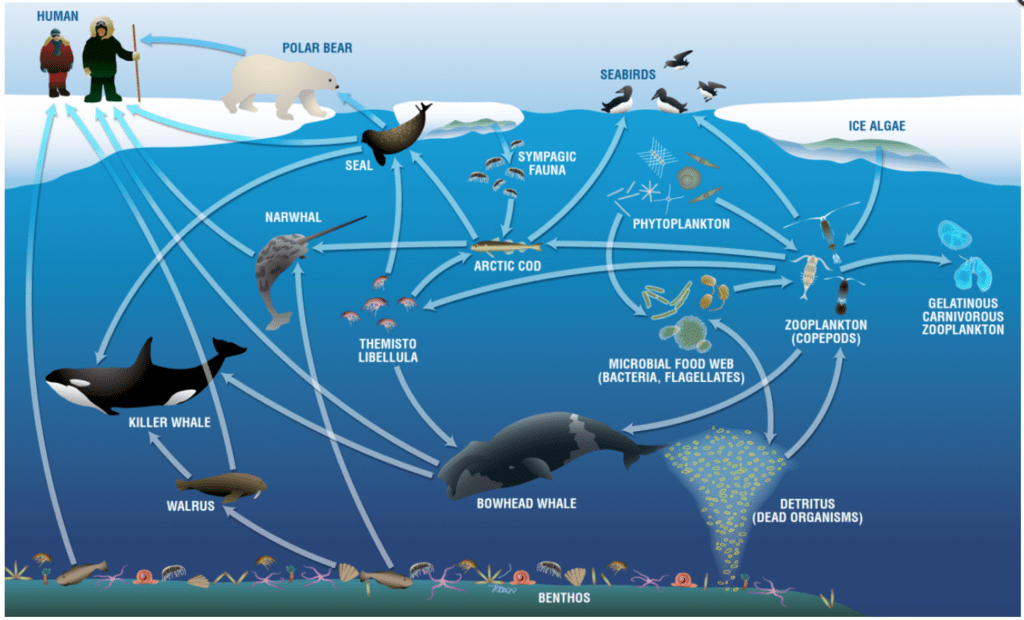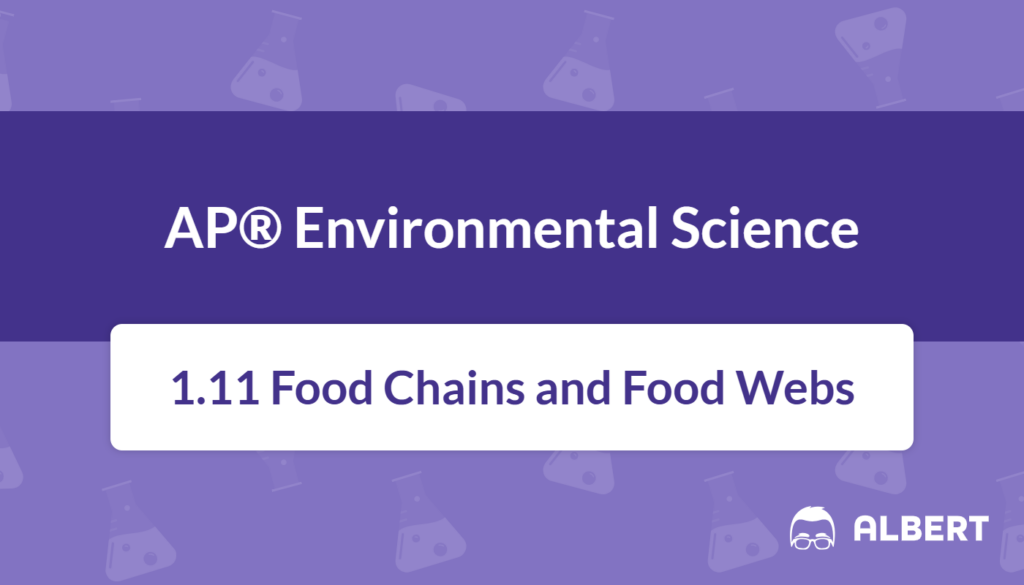What We Review
Understanding Food Chains and Food Webs
Food chains and food webs represent essential models in ecology because they clarify how energy and nutrients move through ecosystems. These concepts highlight the relationships among different organisms and demonstrate how changes in one population can ripple throughout an entire community. Understanding food chains and food webs also helps explain why the loss or introduction of a single species can have significant consequences. This post explores the basic structure of food chains, the interconnected nature of food webs, and the importance of trophic levels and feedback loops.
Introduction to Food Chains and Food Webs
Ecologists use food chains and food webs to model the flow of energy from one living organism to another. A food chain follows a single, linear path—starting with producers such as plants—while a food web depicts how multiple chains interact. Both models cover essential ecological processes by illustrating which organisms eat which other organisms, making them crucial for anyone studying environmental science.
In an ecosystem, all organisms depend on a constant supply of energy. Producers capture energy directly from a source such as the sun. Consumers eat other organisms to gain energy. Decomposers break down dead material, recycling nutrients back into the environment. These roles create a delicate balance, showing why even small disruptions can significantly impact entire communities.
What Is a Food Chain?
A food chain is a simplified representation of how energy moves in a single pathway. It begins with a producer—an organism that can make its own food through processes like photosynthesis. The chain continues with primary consumers (herbivores), secondary consumers (carnivores or omnivores), and often ends with tertiary consumers and decomposers.
Producers occupy the base of the chain because they convert solar energy into chemical energy. Primary consumers then feed on the producers, passing on that energy to higher trophic levels. Eventually, decomposers such as bacteria and fungi break down the remains of each level, ensuring that nutrients are returned to the environment for the next group of producers.
Example of a Simple Food Chain
Consider a freshwater pond system:
- Algae (producer) harness sunlight to produce energy‑rich compounds.
- A small fish (primary consumer) feeds on the algae.
- A larger fish (secondary consumer) consumes the small fish.
- A bird (tertiary consumer) preys on the larger fish.
- Decomposers process any dead organisms, recycling nutrients into the water.
Each step transfers only a fraction of the available energy to the next level. A general rule, known as the 10% rule, states that approximately 10% of energy passes from one trophic level to the next. It can be modeled using an equation such as: E_{n+1} = \frac{E_n}{10}
Here, E_n represents the available energy at a given trophic level, and E_{n+1} is the energy passed on to the next level.
What Is a Food Web?
A food web extends the idea of a food chain by showing multiple, overlapping chains. Unlike a simple linear path, a web acknowledges that most organisms have various food sources, and many predators hunt more than one type of prey. Therefore, a food web often looks like an interwoven network rather than a straight line.
Food webs matter because they reveal the complexity of ecological relationships and how communities can be fragile. When one organism shifts in population size, the entire network may shift as well. For instance, a sudden decrease in a producer population can affect not only primary consumers but also the higher-level consumers that rely on those herbivores for food.

Example of a Food Web
Envision a grassland ecosystem:
- Grasses (producers) feed multiple herbivores, such as grasshoppers, rabbits, and seed-eating birds.
- Grasshoppers might be eaten by frogs, small birds, or snakes.
- Rabbits may be prey for foxes or hawks.
- Seed-eating birds could be prey for owls or larger raptors.
- Decomposers like fungi and bacteria process dead plants and animal remains.
In a single chain, energy transfer appears straightforward. However, a food web shows how one species can be crucial to the energy needs of several others. Such complexity highlights the importance of preserving diverse populations.
Trophic Levels Explained
Trophic levels categorize organisms based on their place in the food chain or web. This concept simplifies the understanding of who consumes whom and how energy transfers through an ecosystem.
- Producers (Autotrophs): Organisms like plants and algae that capture energy, usually from sunlight, to produce their own food.
- Primary Consumers (Herbivores): Animals that eat producers, such as insects and deer.
- Secondary Consumers (Carnivores or Omnivores): Species that feed on primary consumers, including frogs, spiders, or some small mammals.
- Tertiary Consumers: Predators that feed on secondary consumers, such as large fish or birds of prey.
- Decomposers: Organisms that break down organic matter, returning nutrients to the ecosystem.
Example of Energy Movement Through Trophic Levels
Suppose a tree produces leaves using photosynthesis. A caterpillar (primary consumer) eats those leaves, retaining only a fraction of the tree’s stored energy. A bird (secondary consumer) eats the caterpillar, passing on an even smaller fraction. Finally, a hawk (tertiary consumer) consumes the bird, receiving limited energy.
Throughout this process, energy is lost as organisms respire. Consequently, there is less energy available to each successive level.
Feedback Loops in Food Webs
Food webs are dynamic systems subject to positive and negative feedback loops. A feedback loop occurs when the output of a process influences the process itself—either increasing or decreasing a particular effect.
- Positive Feedback Loops: These loops amplify changes. When a population of prey increases, it may support a larger population of predators. As predators thrive, they may reduce certain prey species significantly, allowing other prey species to flourish. This shift can create new conditions that keep amplifying or shifting population sizes.
- Negative Feedback Loops: These loops counteract changes, stabilizing the system over time. For example, if a predator population grows too large, it might deplete its main prey. With fewer prey animals to feed on, the predator population will eventually decline, returning the system closer to its original balance.
Real-World Example: Species Removal or Addition
Imagine an island ecosystem with several bird species that eat insects and small lizards. Suppose a non‑native snake is introduced to the island:
- The snake feeds on both small lizards and birds, reducing their populations significantly.
- With fewer lizards to eat insects, the insect population might increase rapidly.
- Insects then consume more plant material, affecting producers that other species rely on.
- This spiral can become a positive feedback loop if continued predation keeps lizard and bird numbers extremely low.
Alternatively, a negative feedback loop might arise if the snake’s population eventually declines due to a lack of prey. Both scenarios underscore how a single change can reverberate through the entire web.
Importance of Food Chains and Food Webs in Ecosystems
Food chains and food webs maintain the balance of ecosystems. Without stable chains, energy distribution can be disrupted, and certain populations might skyrocket while others plummet. This imbalance can lead to habitat degradation, reduced biodiversity, or even species extinction.
Moreover, understanding food chains informs decisions about conservation. When authorities reintroduce keystone species, such as wolves in Yellowstone National Park, they often see beneficial effects on the local environment. Wolves help regulate deer and elk populations, which prevents overgrazing and allows a greater variety of plant life to flourish.
Furthermore, food web analysis shines a light on the significance of biodiversity. Species richness supports multiple feeding relationships, buffering ecosystems against disturbances. If one species fails, others might partially fill its ecological role. By contrast, a lack of diversity makes ecosystems vulnerable to shocks, such as disease outbreaks or extreme weather events.
Conclusion
Food chains and food webs offer a window into the interconnected relationships that shape our natural world. Recognizing how energy and nutrients move from plants to herbivores, carnivores, and decomposers reveals the fragility of balanced ecosystems. Through models of trophic levels and feedback loops, AP® Environmental Science emphasizes that modifying even a single link can alter entire networks.
Observations in local environments can reinforce these concepts. A small backyard pond might function as a scaled-down ecosystem with algae, insects, small fish, and visiting birds. Large-scale ecosystems, such as forests or oceans, combine multiple food webs that similarly thrive on stable, interdependent relationships.
Ultimately, deeper knowledge of food chains and food webs illuminates why environmental conservation matters. Preventing extinctions, protecting habitats, and practicing responsible resource use all help maintain the intricate balance nature depends on.
Important Vocabulary
- Food Chain: A single, linear pathway showing how energy flows from producers to various consumers.
- Food Web: A complex, interlinking network of multiple food chains in an ecosystem.
- Trophic Levels: Layers in a food chain or web, including producers, various consumers, and decomposers.
- Positive Feedback Loop: A process that amplifies changes and can lead to rapid shifts in population dynamics.
- Negative Feedback Loop: A process that stabilizes or counteracts changes, often returning a system to balance.
Sharpen Your Skills for AP® Environmental Science
Are you preparing for the AP® Environmental Science test? We’ve got you covered! Try our review articles designed to help you confidently tackle real-world AP® Environmental Science problems. You’ll find everything you need to succeed, from quick tips to detailed strategies. Start exploring now!
- AP® Environmental Science: 1.7 Review
- AP® Environmental Science: 1.8 Review
- AP® Environmental Science: 1.9 Review
- AP® Environmental Science: 1.10 Review
Need help preparing for your AP® Environmental Science exam?
Albert has hundreds of AP® Environmental Science practice questions, free response, and full-length practice tests to try out.








